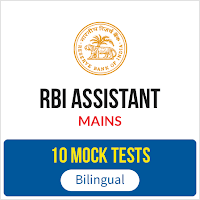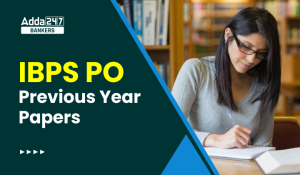Q1. Which of the following is a correct statement?
(a) Normally no interest is paid on current deposit accounts
(b) Interest is paid on current accounts at the same rate as term deposit accounts
(c) The rate of interest on current account and savings account are the same
(d) No interest is paid on any deposit by the bank,
(e) Savings deposits are the same as current deposits
Q2. What do you understand by the term ‘Mortgage’?
(a) Sale of moveable security in the event of default by the borrower
(b) Registration of charge with the Registrar of Companies
(c) Making the security of immovable property available as a cover for a home loan by the borrower
(d) Registration of charge with the Regional Transport Authority
(e) Returning of the security to borrower by the bank of receipt of full payment
Q3. Which of the following is NOT a source of funds of a commercial bank?
(a) Capital
(b) Borrowings from RBI
(c) Call money
(d) Deposits
(e) Cash reserves with RBI
Q4. The Banking Ombudsman is-
(a) is in charge of bank loan for buses
(b) fixes the rates of interest for loans
(c) resolves complaints of customers
(d) issues licences for new bank branches
(e) is the head of all nationalised banks
Q5. “Scheduled bank” means a bank
(a) incorporated under the Companies Act, 1956,
(b) authorised to the Banking business,
(c) Governed by the Banking Regulation Act, 1949,
(d) Included in the Second schedule to the Reserve Bank of India Act 1934
(e) None of the above
Q6. Which of the following acts is useful in controlling HAWALA transactions?
(a) FEMA Act
(b) RBI Act
(c) DICGC Act
(d) Banking Regulation Act
(e) None of the above
Q7. What does the term SME stand for?
(a) Small and Micro Enterprises
(b) Small and Medium Enterprises
(c) State and Medium Economy
(d) Small and Medium Economy
(e) None of the above
Q8. CAMELS’ is a type of Bank Rating System. In CAMELS, what does ‘C’ stand for?
(a) Currency
(b) Compensation
(c) Capital Adequacy
(d) Capitalisation
(e) None of the above
Q9. In banking parlance, ‘NPA’ stands for?
(a) Non-Performing Asset
(b) Net Producing Asset
(c) Net Performing Asset
(d) Not Promoting Asset
(e) None of the above
Q10. LAF is an indirect instrument of monetary policy, which is used by RBI to regulate the liquidity in banking system. ‘LAF’ stands for-
(a) Liquidity Adjustment Facility
(b) Liquidity Account Facility
(c) Liquidity Allotment Facility
(d) Long Adjustment Feature
(e) None of the above
Q11. Often, we read in the newspapers that several Indian companies are taking the FCCB route to raise capital. What does the term FCCB stand for?
(a) Foreign Currency Convertible Bond
(b) Foreign Convertible Credit Bond
(c) Financial Consortium and Credit Bureau
(d) Future Credit and Currency Bureau
(e) None of the above
Q12. _____________ are NOT a part of the Scheduled Banking structure in India.
(a) Money lenders
(b) Public sector banks
(c) Private sector banks
(d) Regional rural banks
(e) None of the above
Q13. ‘MAT’ is an acronym which stands for-
(a) Maximum Alternate Tax
(b) Minimum Alternate Tax
(c) Minimum Affordable Tax
(d) Maximum Affordable Tax
(e) None of the above
Q14. DEPB (Duty Entitled Passbook) scheme which ended in September 2011 was related to-
(a) Foreign direct investment
(b) Foreign institutional investment
(c) Export promotion
(d) Import substitution
(e) None of the above
Q15. ‘KYC’ (Know Your Customer) norms were implemented in the Indian banking system in 2002 as per the directive of?
(a) SEBI
(b) RBI
(c) IBA
(d) IRDA
(e) None of the above





 The Hindu Review October 2022: Download ...
The Hindu Review October 2022: Download ...
 IBPS PO Previous Year Question Papers Wi...
IBPS PO Previous Year Question Papers Wi...
 ECGC PO Interview Call Letter 2025 Out, ...
ECGC PO Interview Call Letter 2025 Out, ...





